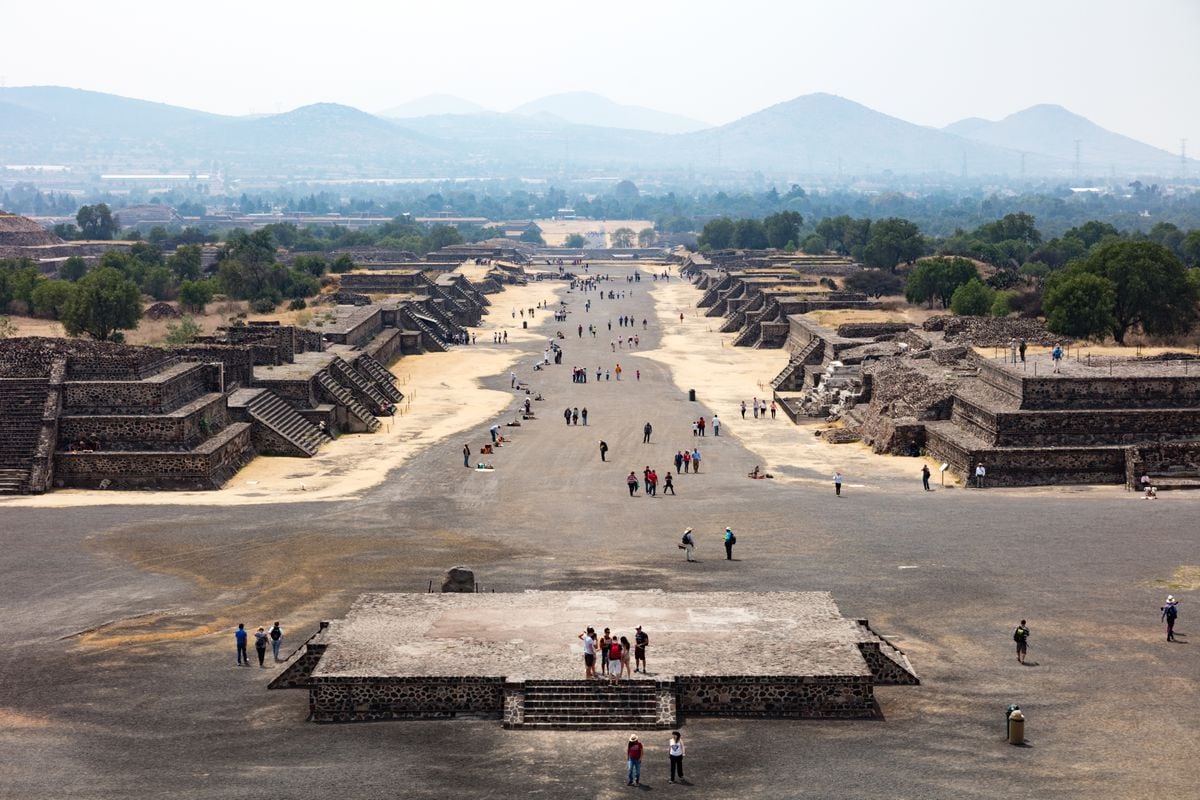Five megaearthquakes destroyed the city-state of Teotihuacan. Science

Why the impressive city-state of Teotihuacan – one of the most important pre-Hispanic centers of power in Central America – disappeared is one of the great mysteries of world archaeology. Experts agree that its population was more than 100,000 in the 2nd century, falling to just under 5,000 in the 7th century. War, epidemic? study now The ancient culture of Teotihuacan was affected by megaearthquakes during the Early Epiclassic periodwhich has just been published in a scientific journal Archaeological Science Journal: Report, provides a surprising answer: five major seismic movements occurring between approximately 100 and 650 years ago destroyed or seriously damaged its main buildings and directly caused the collapse of this civilization, despite Its inhabitants tried to recreate nature. Refused them.
“The possibility that megaearthquakes of the Mesoamerican Trench (Pacific Coast) may have been responsible for the damage does not conflict with other existing theories about its collapse, given that the sudden superposition of natural disasters such as earthquakes led to internal wars, “Rebellions and civil unrest could increase,” indicates the article signed by experts from the Geological and Mining Institute of Spain (IGME-CSIC), the Universities of Barcelona, Salamanca, Autonomous of Madrid and Michoacana de San Nicolás Hidalgo (Mexico). .
The Teotihuacan culture flourished in the Central Valley of Mexico between 150 and 650 AD. It was a civilization that created a society that was capable of building magnificent pyramids and beautiful temples. Experts believe that its spectacular and rapid urban and technological development had its origins, interestingly, in two volcanic eruptions between the 50s and 300s, which also devastated the thriving city of Cuicuilco. Its disappearance under lava and ash cleared the way to Teotihuacan.
This city-state was spread over approximately 22 square kilometers at its peak. It is estimated that about 100,000 people lived there, although some authors have raised the figure to 200,000. It had three main buildings: the Pyramids of the Sun (65 meters high) and the Moon (45 meters), as well as the Temple of the Feathered Serpent or Quetzalcoatl. Middle and upper class residential areas were clustered around them. The urban layout was organized along a large avenue of more than two kilometers (Avenue of the Dead) to the north.
But by the year 550, “the population declined drastically, fires became frequent and buildings collapsed.” These events mark what is known as the Epiclassic cultural period of Mexico’s Central Sierra: facing so many misfortunes, the Teotihuacans decided to abandon the city and settle in nearby Xochicalco and Tula, resulting in a New development was encouraged. Culture, Toltec.
To reach its conclusions, the report – composed of experts Raul Pérez, Natalia Moragas, Javier Aleez, Pablo Silva, Jorge Greiner, Miguel Ángel Rodríguez-Pascua, Adria Ramos, María A. Perucha, signed by Elvira Roquero and Víctor Garuno – is based on detailed archaeological information collected by other experts over the years, in addition to the so-called EAE (archaeological effects of earthquakes) observed in the Temple of the Feathered Serpent and the Pyramids of the Sun and the Moon, By its short name in English) the study of.
/cloudfront-eu-central-1.images.arcpublishing.com/prisa/MB4CT4GUOVAVNDQKMAB45LW72M.jpg)
Spanish and Mexican experts believe that the megaearthquake that destroyed the city originated in the so-called Mesoamerican Trench in the Pacific Ocean. “The spatial pattern of the EAE indicates the direction of seismic shaking along a southwest to northeast direction. This means that the Mesoamerican Trench may be its source. In this case, the resulting megaearthquake could explain the EAE and the seismic intensity that affected the city so seriously.” However, they acknowledge, the source of the earthquake could be another source closer to the city, although they The possibility of this is considered less.
They are clear that there were five major earthquakes between the years 100 and 650, which forced the Teotihuacans to modify and reinforce their architectural style in the reconstruction of the Pyramids of the Sun and the Moon, as well as the Temple of the Sun. Of the winged snake. He tried to reduce the impact of new earthquakes. But considering the intensity of the upcoming earthquakes, these works were not sufficient. An example of these anti-seismic measures is the famous “locking” of ashlars, which prevents the horizontal movement of stone blocks, as the Incas did at Machu Picchu, for example.
In particular, according to experts, the city suffered “at least two powerful destructive earthquakes (intensity VIII-IX), which had a great influence on the development of architectural and construction styles.” The first year occurred between 1 and 150 and the second between 405 and 505.

Three other earthquakes of lesser intensity (magnitude VIII) also affected the city around the years 225, 400 and 600. “The combined action of ancient tectonic movements may explain the documented archaeological damage at some sites, but the latter two, the first being abandonment in 650, are the most likely causes.
The EAE described include the broken and fragile corners affecting the western stairs of the Pyramid of the Sun and the New and Old Temples of the Feathered Serpent. They completely reject, and on the basis of scientific evidence, that this damage could be caused by deliberate human breakage of the basalt stones of the stairs or by climate erosion.
“The combination of high seismic energy released by repeated earthquakes, frequency amplitude and filling of sediments in Lake Texcoco (about 50 kilometers away) can explain the deformation patterns observed in the pyramids and temples throughout the history of Teotihuacan. Is”, he explains. Finally, they call for a “detailed analysis of the liquefaction and deformation of the soft sediments of the lake”, as this would help establish the exact date when Teotihuacan’s inhabitants surrendered to the forces of nature.
you can follow Subject In Facebook, x And InstagramOr sign up here to receive our weekly newspaper,
Subscribe to continue reading
read without limits
,
(TagstoTranslate)Earthquakes(T)Teotihuacan(T)Earthquakes(T)Science(T)Machu Picchu(T)News from Mexico(T)IGME(T)CSIC(T)History